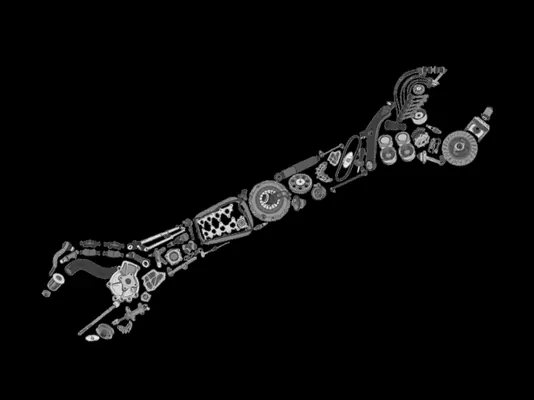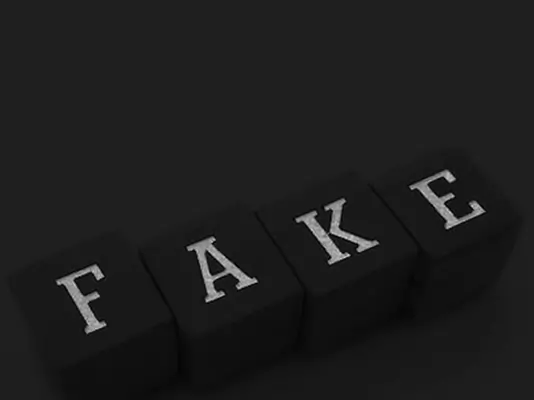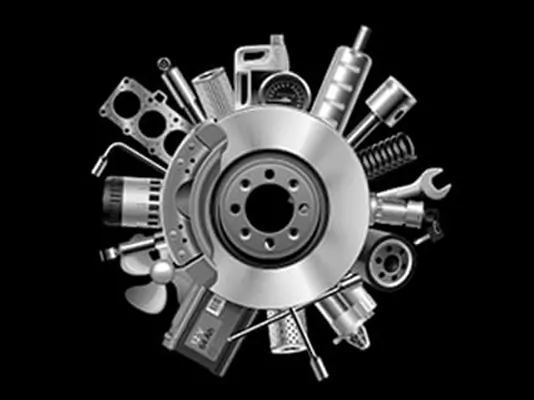Competition Commission of India has recently come down heavily on a majority of car manufacturers in India for restrictive and anti-competitive trade practices. According to newspaper reports, CCI believes that these auto companies or OEMs(Original Equipment Manufacturers) were blocking growth of spare parts and after sales service market by (a) ensuring independent (nonaffiliated) repairers cannot get genuine spare parts/technology required; (b) Imposing blanket condition that warranties would be cancelled if the consumer avails services of any independent repairer; (c) Ensuring agreement with local original equipment suppliers (OES) which prevent/limit them from selling in the open market. They were also accused of selling spare parts with very high mark up. This is because when a customer buys a car, he is locked-in to buy only specific spares – creating a monopoly situation when others are not allowed to sell. This also allows car companies to price spares without pressure of competition. Therefore CCI believes that this restricts consumers’ access to spare parts and curtails their freedom of choice in service provider.
CCI through its ruling has insisted that the car companies put in place an effective system to make the spare parts and diagnostic tools easily available in the open market for customers and independent repairers. SIAM(Society of Indian Automobile Manufacturers), according to newspaper reports, has reacted to the ruling expressing their concern that the ruling does not take into account a) safety of customers b) protection of intellectual property rights and patents which the companies own.
Spares and services businesses of OEMs are essentially set up to offer aftersales support for vehicles. A good infrastructure of after sales service has a direct impact on vehicle sales. So one of the objectives of spares and services businesses is to offer service excellence and but another objective is to make good profits from this businesses. At times, these two objectives are in conflict. If OEMs adhere to CCI recommendations, they are actually increasing the service network footprint for their vehicles – which is good for their overall vehicle sales. But on the other hand, opening up the market to competition can lead to drain of profits for the spares business. The best way out would be to be a situation where one can have the cake and eat it too!
While car manufacturers may worry that their bottom lines or the car owners safety will be affected negatively, the fact is that they need not. The reasons are many
a) Potential to develop the aftermarket spares business: The current practice is to lock car owners in with the warranty clause and concentrate on servicing customers in this period (usually two years) of the lifetime of the car. As the car leaves the warranty period, in vast majority of the cases, it also leaves the fold of the OEM. Once the vehicle gets out of the fold, the OEM loses out both on spares and services business. According to ACMA while nearly 20% of the cars on road are more than 15 years old, the typical age profile of cars reporting at dealerships is of less than seven years. This means that the older the car, the less likely the car visits the OEM service center. Once the car changes hands, this is even less likely. But the irony is that the older the car grows, more is the need for service and parts. Industry studies pegs the current size of the components business in the Indian automotive after-market between Rs 28,000 crore- Rs 24,800 crore (of this 26 per cent is accounted for by cars), whereas the service market is estimated at Rs 8,000 crore. The combined value is projected to rise to Rs 40,000 crore by 2015 and to Rs 60,000 crore by 2020. The parts aftermarket is also expected to grow at 11 per cent till 2015 to reach Rs 37,000 crore. A recent ACMA study reveals coverage figures as low as 15-20% indicating that this market is addressed ineffectively by most OEMs.
b) Opportunity to curtail part and service leaks form dealerships and service centers:
Many car manufacturers do not have complete reach either through their service centers or through their distributors to cater to a fast expanding aftermarket. Even the suppliers of the OEMs who have the freedom (there may be agreements restricting it) to supply to this market very rarely have the capability to do an effective distribution. Since this means that parts of many of the car brands are not freely available in the market, the situation creates an unmet need in the market opening up an oft unacknowledged channel – leak of parts from dealerships and service centers into the open market- even if this has been prohibited by the OEM with safety of the customers in mind. It is also seen that many OEMs have targets for parts sales for its service centers. In these cases too, it becomes in the best interest of the service center to push some of their monthly target into the open market. This will often be at a lower price since the attempt is to either clear inventory or to sell in bulk. The best intentions of the OEM are thus defeated while simultaneously taking a hit to the bottom line.
c) Opportunity to bring down counterfeiting: One of the prime reasons for significant counterfeit sales in spare parts is because of poor availability of parts. No other consumer product category has seen counterfeiting to this extent in the Indian market. ACMA assesses that 36% of the components in the aftermarket are fake. It is also thought to be growing 9-11% annually. Since counterfeiting is usually of the OEM’s intellectual property, in addition to eating into the aftersales of the car manufacturer, it may also spoil the car and endanger the life of the owner.
d) New market segment opening up: A new segment of fleet operators and taxis that tend to be demanding in a) price b) reliability c) quality and d) safety is evolving into a relevant segment. In recent years this segment has grown substantially to over 5 lakh cars on the road. The larger among them even have their own service centers. In addition to price competitiveness, reliability in availability of the required part at the right time at the required place is of crucial interest to them! If there are long periods of waiting to source parts from the OEMs and their distributors, they will look for alternatives. When a fleet operator downs a car for want of a part, it costs him!

What can be done?
Simple, increases reach and range! This can be done in many ways:
a) Aggressively distribute spare parts: While the OES’s may wish to cater to the market that the OEMs are neglecting, they have their limitations. Distributing (vis-à-vis wholesaling) requires a different mindset (selling to many small entities in small quantities frequently) is not the cup of tea for parts manufacturers as they are more organized to think B2B and big volumes. They look into aftermarket only opportunistically usually during downturns. When business picks up they tend to neglect the aftermarket with production capacity continuously getting diverted to the OEM’s production requirement. Moreover, if the original parts were reliably available, the customers would much rather buy a “first fit”. Therefore, instead of prohibiting the suppliers, it’s more profitable for the OEM to develop the distribution network and let market forces do the necessary.
b) Develop a multi-tiered service center system: Currently, the coverage of the service centers of most of the OEMs is limited and is not able to reach out effectively to cars that leave the fold- especially the second hand market. These cars are by force then dependent on garage owners. While it may not be feasible for OEMs to reach the nooks and corners of the country on its own, it will be feasible to look at a model wherein the OEM trains or associates with two kinds of multi brand garage owners (franchisees) in addition to authorized service centers. The Tier I could constitute garage owners who would be located at places where the OEMs do not have an authorized service center. They would be frequently trained/ certified and equipped for a fee to handle the entire minor and a few major repairs. The Tier II could be small garage owners who are trained/ certified and managed by either the Tier I or the authorized service provider in the region. When either of these garages is unable to service the requirement of a customer, they can send the car to Tier II or authorized service center based on the kind of repairs needed.
The company service center would continue to offer premium service because of very good service delivery – the multi-brand car garages cannot ensure good parts availability due to multiplicity of parts but OEM service centers will have good parts availability so car repair can be very fast. Moreover, “first fit” will always attract a premium and address a different segment of market- the less price sensitive new car owners. Further, while franchisee service centers may price lower, they cannot manage complex services nor can they provide rapid resolution but their presence in the channel will help OEMs give depth to the spares business and address currently unaddressed segments increasing vehicle and spare parts sales.
c) Use pull based distribution: In order for either of the above to succeed, it will be necessary that the car manufacturer uses a pull based system of replenishment. If this distribution is attempted with the traditional push system, based on sales targets and dumping of inventory down the channel members, it will also bring with it the traditional problems of high inventory of the wrong parts at the wrong places and uselessly blocked working capital. This also will mean disgruntled channel partners who may eventually go bankrupt. The small garage owners especially, will often be severely handicapped and not have enough money to invest in equipment, technology and training. Pull method of distribution, at the same time, ensures higher sales and better availability at considerably lower levels of inventory. But critical conditions to ensure success while executing the pull system of replenishment for distribution are:
– Moving wholesalers out from the network and replacing them by dedicated distributers with clear territory limitation. This will ensure deeper penetration of reach while preventing cross country dumping.
– Ensuring placement and continuous availability of relevant range at maximum retail points. This will ensure availability without the retailer having to hoard any parts for fear of non-availability.
– Dedicated effort by the distributor to collect orders and replenish frequently.
– A central warehouse which acts as a dampener to parts requirement fluctuations. The greatest variability in parts demand will logically be at the point of sale and service and least at the aggregate level. Therefore, using this power of aggregation, a central warehouse will be able to serve many different destinations in the supply chain far more efficiently whilst keeping the lowest possible overall stock in the system
Higher sales and better availability at considerably lower levels of inventory will allow distributers to earn high ROI providing him with the motivation to invest resources towards the required procedures for frequent retail servicing. OEMs can therefore happily comply by the CCI and augment revenues at the same time by claiming the vast untapped opportunity in the aftermarket.








